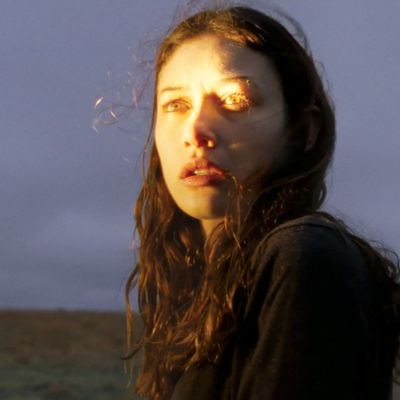
Speaking of Terrence Malick at a Cannes press conference for The Tree of Life (the elusive director was a no-show), Brad Pitt said, “He’s like a guy with a butterfly net waiting for the truth to go by.” That’s very evocative, but during his latest film, To the Wonder, I wondered if that butterfly net should be used on Malick. The problem isn’t that he lopped off much of the dialogue—and the narrative line—in the editing room. That’s how Malick “finds” his films these days, by sifting through and layering images, creating leitmotifs, penning voice-overs that express the characters’ inner thoughts. The problem is that what he kept — brooding; gamboling; repeated shots of a Parisian woman named Marina (Olga Kurylenko) greeting the sky as a supplicant, arms extended, the camera trailing her slender form; questions to and about God or Christ or a nameless higher power (“What is this love that loves us, that comes from nowhere … from all around?”) — has no context other than Malick’s other films. That might make him a doctrinaire auteurist’s darling, but for the rest of us To the Wonder feels like generalized woo-woo — and self-parody.
At the core of the film is the love (if love it doth be) of Marina and a man identified as “Neil,” played by Ben Affleck. They don’t meet cute, they meet wondrous. Marina thinks there’s evidence of God in their union, with its potential for salvation for her and her young daughter, Tatiana (Tatiana Chiline). “Love makes us one,” she says in voice-over, in French. “Un, deux … moi et toi, toi et moi …” They travel a long, lonely road to a seaside castle with a magnificent cathedral (“We climbed the steps, to the wonder …”) and then walk on the beach, their bare feet sinking into the wet sand (squish, squish). Marina gives the camera (representing Neil) a come-hither look and half-dances, arms in the air, toward the sunset (or sunrise — what cinematographers call the “magic hour”). When Marina and Tatiana move with Neil to America, we hear once more the same Wagnerian stirrings as in The Tree of Life and The New World. It is Morning in America — in the Garden, i.e., Oklahoma, a land Marina calls “so calm, honest, rich …” while wandering among long-horned cattle and men with ten-gallon hats. Then civilization has to go and poison everything.
In this case, the poison is literal — chromium and lead in the soil. Nothing comes of this except symbolism, but Neil does poke around taking measurements, listening to locals played by nonactors. Malick mixes his beautiful stars in with people who are — how can I say this delicately? — odd-looking, and, in some cases, very, very old (and thereby nearer to God?). The central relationship, meanwhile, becomes almost as corroded as the environment. Neil won’t pop the question. Marina, a devout Catholic, consults Father Quintana (Javier Bardem) about whether her divorce will invalidate a marriage to Neil in the eyes of the Lord. But Father Quintana isn’t all there. He has his own issues. He visits the poor but feels little. “Everywhere you’re present and still I can’t see you … You’re within me … Why don’t I hold on to what I’ve found? … My heart is hard.” Sounds like he could use a good exorcism, but it’s not that kind of movie.
Cinematographer Emmanuel Lubezki is mostly in the position of trailing the actors around — Have Steadicam, Will Travel — and he and Malick also go in for low-angle shots that give the characters immensity. Immensity but no specificity. Did Malick dislike what he got from Affleck? He must have had some reason in the final film for keeping the actor’s face offscreen as much as possible, putting the camera behind Affleck’s broad back so that he becomes Everyhunk (or, more often, Everylug). We don’t know why Neil can’t bring himself to commit legally to Marina — he just can’t. So he takes up with a divorced rancher named Jane (a blonde Rachel McAdams), who stands next to a horse with the wind blowing her hair and tells him she had a child and it died but is still the type who’s always “chasing moonbeams.” I figured we’d then see Jane dancing, arms extended, under the moon, but maybe the lighting wasn’t right. Neil can’t commit to Jane, either.
By the end the priest is hiding from everyone, and Marina is bewailing her inability (I guess) to take the veil: “There are two women inside me, one full of love for You, the other who pulls me down towards the Earth.” The most wondrous thing in To the Wonder is Kurylenko, sylvan and meltingly beautiful, a tantalizing combination of sensuality and sexuality. But for all Malick’s transcendental aspirations, the only difference between the way he shoots her and the way Harmony Korine shoots the lady parts in Spring Breakers is that Korine knows he has lust in his heart.
This review initially appeared in the April 15 issue of New York Magazine.


